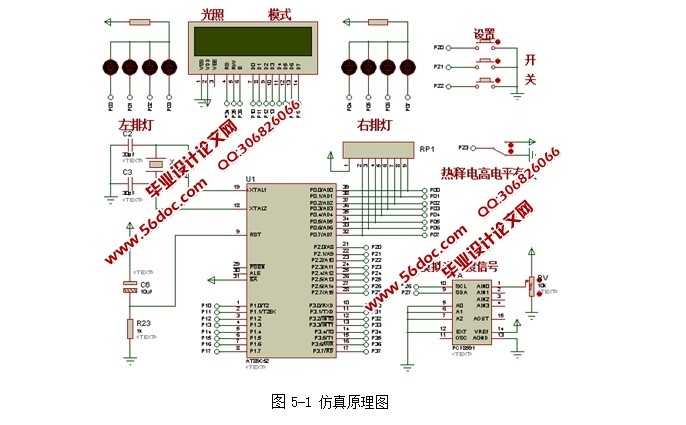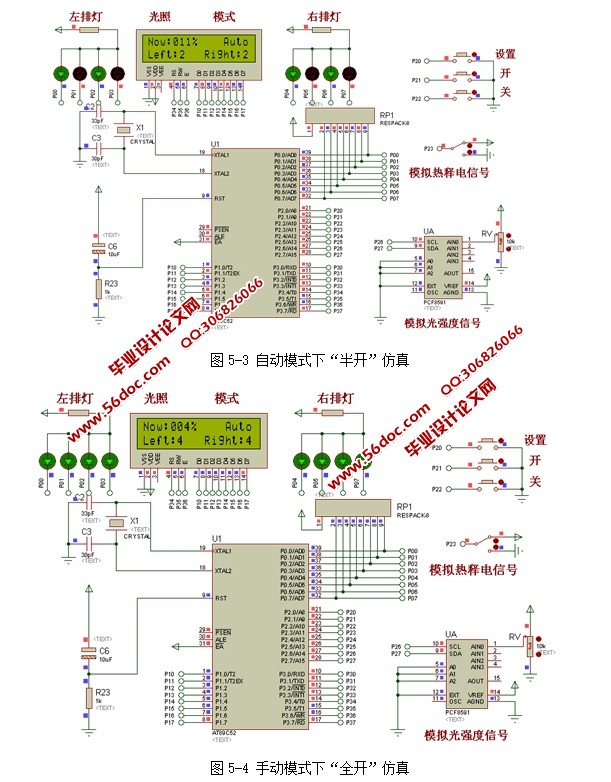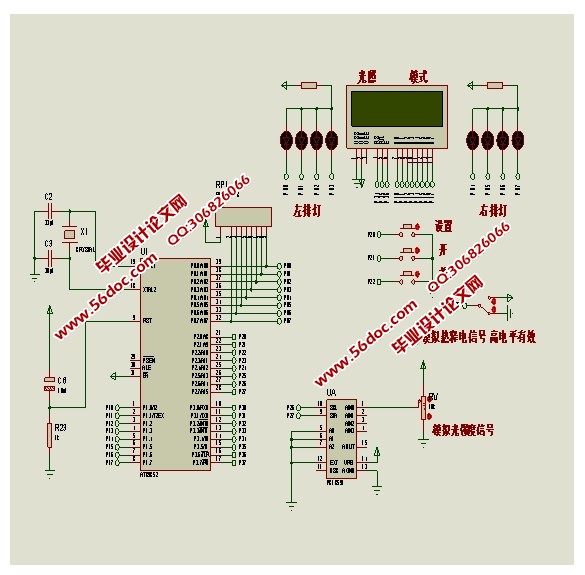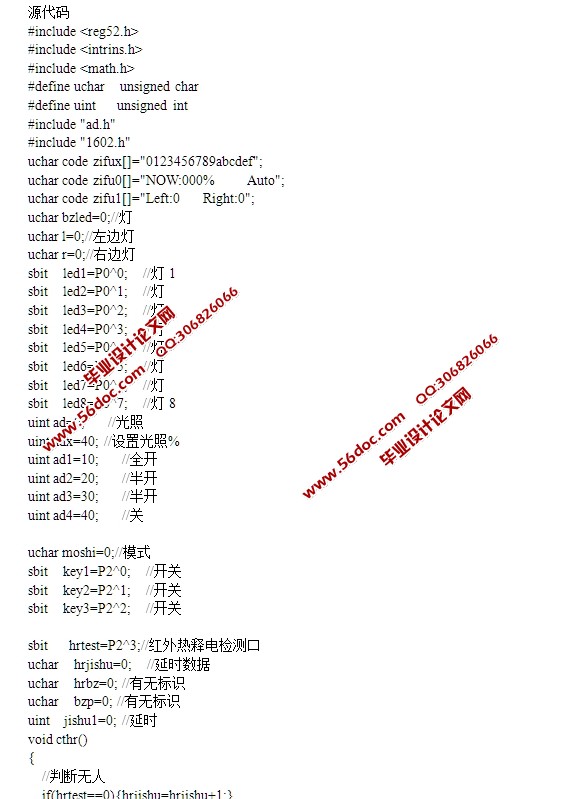台灯亮度自动调节电路的设计(含电路图,Proteus仿真程序)★
无需注册登录,支付后按照提示操作即可获取该资料.
台灯亮度自动调节电路的设计(含电路图,Proteus仿真程序)★(开题报告,论文9500字,Proteus仿真程序,答辩PPT)
摘要
本文研究的是台灯照明系统的控制方法,特别是系统智能化的发展,探索了单片机对台灯照明系统控制原理和实现方法,提出设计思路,在这种前提下,研究出控制系统的硬件和软件。本控制装置的智能部件是用STC89C52单片机,运用红外人体传感器检测系统来检测是否有人存在。此外使用光敏电阻和人体热释电传感器组成的光线强度和有人无人的检测系统,控制器通过采集传感器的输出值,实现对台灯的智能化控制,从而实现节约能源的目的。不仅如此,系统利用按键和液晶显示组成了人机交互界面,实现了系统当前运行状态的显示和系统参数的设置;本设计利用protus仿真实现系统各部分功能模块的仿真。本设计的优点是控制简单,体积小,性价比高,专业性强,安全性好等,而且还能满足多种需求,能够大大节能。
关键词:传感器;单片机;热释电传感器
Abstract
This paper is lamp lighting system control method, especially the development of intelligent system, explore the MCU lamp lighting system control principle and realization method, put forward design ideas, in this premise, control system hardware and software. The control device of intelligent components is with STC89C52 microcontroller, using the human body infrared sensor detection system to detect the presence of people. In addition to the use of photosensitive resistance and body heat pyroelectric sensor is composed of light intensity and no detection system, controller and the sensor output value to achieve intelligent control for the desk lamp, so as to realize the energy saving Purpose. Not only that, system using the key and the LCD display and the man-machine interface, the realization of the system is currently running state display and system parameter settings; this design using PROTUS simulation realization of each part of the system function modules of simulation. Advantages of this design is simple control, small volume, high price, professional and strong, safe and good, but also to meet the needs of a variety of, can greatly energy-saving.
Key words: The sensor; Single chip microcomputer; Pyroelectric sensors
2.1 台灯控制器简介
本次设计的控制系统,能够对台灯的灯光进行有效控制,实现节约能源的目标。设计系统的包括对环境的光强和人体相关信号的采集。控制器通过对采集的数据进行分析,控制台灯处于不同的工作方式,在节约能源的同时,确保台灯周边的光线充足。
2.2 设计目标
本课题是要设计一种基于单片机的台灯光控制系统,利用单片机对光照强度和人体存在传感器的输入进行采集和处理,通过和设置的值进行对比,实现对台灯周边灯的智能控制。本设需要实现的功能如下:
1)利用感光模块实现环境光强的采集[4];
2)利用单片机对感光传感感器和人体接近传感器的输出信号进采集和处理,实现对台灯的智能控制;
3)通程序设置光强的调节点,根据调节点,控制台灯自动控制台灯亮度。
4)实现系统的软件和硬件设计,利用Protues软件进行可行性仿真,对软件和硬件设计进行验证;




目 录
1引言 1
1.1 选题背景和意义 1
1.2 研究现状 1
1.3设计研究主要内容 1
1.4本文的结构安排 2
2 控制器简介与方案分析 3
2.1 台灯控制器简介 3
2.2 设计目标 3
2.3 系统主要器件选型 3
2.3.1主控器件选型
2.3.2显示电路选择
2.3.3光敏传感器选择 3
2.3.4人体存在检测传感器选择 3
2.4 系统基本框架 4
3 系统硬件设计 5
3.1 单片机最小系统设计 5
3.1.1 STC89C52单片机介绍 5
3.1.2 单片机最小系统设计 5
3.2 传感器采集电路 6
3.2.1光强采集电路设计 6
3.2.2人体存在检测电路设计 7
3.3 灯光控制电路 8
3.4 液晶显示电路 8
3.5 按键电路 9
4 系统软件设计 10
4.1 开发环境介绍 10
4.2 主程序设计 10
4.3 光强显示子程序设计 10
4.3 状态显示程序设计 11
4.4 运行处理程序设计 12
5 系统仿真和调试 13
5.1系统仿真 13
5.1.1 Proteus软件介绍 13
5.1.2 Proteus功能建立步骤 13
5.1.3 仿真原理图设计 13
5.1.4 运行结果分析 14
总结 17
致 谢 18
参考文献: 19
附录: 20
